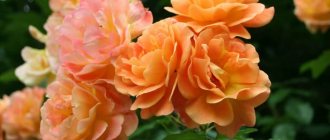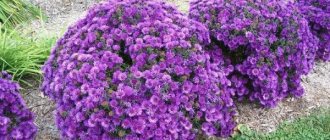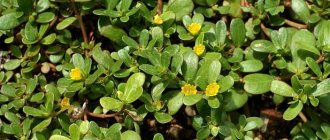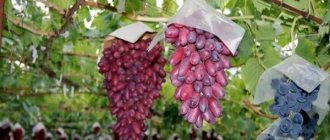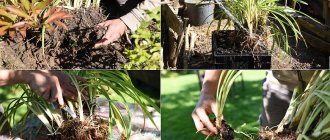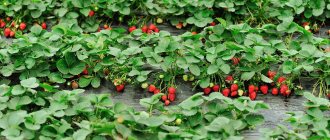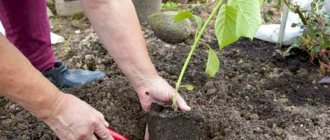- October 17, 2019
- Flowers
- Efimova Anastasia
A bouquet of flowers is a wonderful, but, alas, short-lived gift. Even the youngest buds lose their freshness after just a few days. Many people want to give cut roses a second life and try to root them. Most often it is unsuccessful, since the process of forming new roots requires special conditions.
And yet you can grow a rose from a bouquet at home. You just need to carefully follow the instructions, and everything will work out!
What flowers can be used for cuttings
Experienced gardeners know well how to grow a rose from a bouquet. Skills and abilities are acquired through many years of experimentation with different varieties of flowers. But for an amateur, this process can be difficult.
The fact is that theoretically you can work with any of the purchased roses. How to grow a rose in practice is a completely different matter. Flower growers know that winter flowers take root worse than summer ones. And at home, local varieties will take root faster than imported bushes.
For 100% success, you need to choose flowers grown in your region, cut in May-June, and not treated with chemicals. It is also worth remembering that hybrid and grafted bushes often grow roses that are completely different from the parent flower. You can experiment with non-native flowers at any time of year. But in this case, the chance of failure increases significantly.
Precautionary measures
When working with the drug, you need to wear a plastic apron, latex gloves, a gauze bandage or a respirator, and glasses. To prepare the working solution, do not use containers that are used for eating or preparing food or containing drinking water. During the procedure you should not drink, eat or smoke. After finishing work, you must take a shower and put on clean clothes.
- Reviews and advice on the use of the drug HOM
Empty packaging should be burned or thrown away with household waste.
Preparation of cuttings
To grow roses from a bouquet, you need to select the right cuttings. This is the most important stage of preparation and should not be neglected. Flower growers often argue about which stems to take - fresh, on the day of purchase, or already standing and withered. Both cases have their own arguments and chances of success. In the first option, the cuttings are used immediately, in the second, the dried sections on the stems need to be trimmed and the cuttings placed in cold water for a couple of hours.
But by and large, the only thing that matters is what the stem looks like. It should be strong, healthy, without signs of decay and at the initial stage of lignification. Young flexible green shoots have not yet gained strength for growth. Completely brown hard ones germinate poorly and often rot.
Cuttings of roses from a bouquet are carried out only with a sharp instrument - a knife or pruning shears. A dull blade unnecessarily crushes and injures the plant. It is also important to treat all tools and planting containers from bacteria. To do this, just pour boiling water over the equipment or wash it with soapy water.
Step-by-step instructions for cutting roses
Select the strongest and healthiest flowers from the bouquet. The idea is to cut off all the buds on them.
Cut the stem into cuttings - each 20-25 cm long. An oblique cut is made at the bottom of the stem to increase the absorption surface. As a rule, the cut starts 1-2 cm from the lower bud. A straight cut is made from above - a couple of centimeters from the upper bud. Thus, each leaf must have at least two buds (growth points). Prepare the required number of cuttings.
Remove all lower leaves. Cut the top ones by 1/3. This will reduce moisture loss. There is no need to remove all the leaves. But the spikes can be sacrificed.
Prepare a container with clean, settled water. You need to add a couple of drops of growth stimulants to it. Dip the cuttings about a third into the liquid (with an oblique cut down) and wait 6 hours.
Root flowers in any convenient way. There are several of them, and to achieve a positive result it is worth using at least 2-3. Therefore, cuttings should be prepared with a reserve - most of them will not take root, but the remaining ones will pleasantly please.
How to grow a rose from a purchased rose cutting
After purchasing the seedlings, you can begin planting them. For beginner gardeners, a step-by-step growing method is suitable. It consists of the following steps:
- the cutting at the base is cut at 45°;
- Only one shoot with leaves is left on it, and the topmost one is shortened by 1/3;
- if there is a break in work, then place the treated seedlings in a plastic bag and store in the refrigerator;
- when planting is done at home, it is recommended to choose a place indoors where there is enough light;
- soil for growing roses is created from equal volumes of peat, sand and garden soil;
- the cuttings are treated with a stimulant, for example, the drug “Zircon”;
- Roses will grow well at a room temperature of around 22°C.
To grow flowers, you need to properly plant the cuttings in the ground and maintain certain conditions:
- when planting, the second bud of the seedling is left on the soil surface;
- the soil in the pot should be constantly moist, but puddles should not be allowed to appear under the cuttings;
- when growing roses at home, they are covered with film or a plastic bottle;
- Water the plants with warm water in the morning or evening.
Important! If a person intends to grow flowers in an apartment, then for normal development of the root system, he must pick off the buds for the first 2 years.
Their bushes need to be shaped every year by pruning underdeveloped or old shoots. After all, domestic roses need help to grow properly.
To root cuttings from a bouquet, many gardeners recommend using a fairly simple and reliable method of growing flowers. To do this, you need potatoes with a smooth surface. Young root vegetables are best suited, but if it is autumn, then use potatoes from the harvest. The sequence of operations is as follows:
- First, all the eyes are cut out of the vegetable;
- then use a knife to make holes in the potatoes equal to the diameter of the cutting;
- the seedling is soaked in an aqueous solution of Kornevin for 24 hours and then inserted into the prepared vegetable;
- planting is done in a pot with drainage;
- The potato tuber must be completely covered with soil.
Note! This method allows for rapid plant growth due to the presence in the tuber of all the substances necessary for the development of the rose.
Rose in potato tubers
Growth stimulants
How to root a rose from a bouquet? At home, many novice gardeners neglect the achievements of modern chemistry, and completely in vain. Growth stimulants activate root growth, the bush will take root faster and will not hurt for a long time.
You can prepare growth stimulants yourself - from water and honey (a teaspoon per liter of water) or aloe juice with water in a ratio of 1:10.
You can also buy them in the store. The drugs “Kornevin”, “Radifarm”, “Zircon”, “Epin extra” are very popular (use according to the instructions on the package).
How to grow a rose? We prepared cuttings from the cut flower, now comes the stage of root germination.
Instructions for use
When used correctly, Kornevin is able to stimulate vegetative changes in bulbs, cuttings and seeds. But you can harm them if you keep the plants in the solution or prepare it incorrectly. There are two ways to use Kornevin and each gives good results.
How to use Kornevin in dry form
If you don’t have time to prepare a solution and soak plants in it, you can use Kornevin in dry form. They sprinkle the underground parts of plants like powder. When they are planted in the ground, the powder reacts with the water contained in the soil and begins to act on plant cells.
The following types of crops are most often processed using the dry method:
- exotic;
- all flowers, including bulbous ones;
- shrubs for decorative purposes.
However, it is not prohibited to powder the roots of seedlings of fruit trees and berry gardens. If the plants are very small, you can pour Kornevin into any container and immerse the roots completely. It is also permissible to sprinkle root grafts on the grafting sites for better and faster survival.
Treat cuttings and leaf sections with Kornevin powder. In this case, both the cut site itself and the bark/stem 1-2 cm above it are powdered. After treatment, the cuttings are dipped in a container of water until roots appear.
Kornevin powder can be mixed with other components, for example, with crushed activated carbon. To protect plants from fungal diseases, you can add fungicides (1 part per 10 parts Kornevin).
Preparation of the solution
Kornevin's solution is used more often than dry powder. The drug is diluted in water in a ratio of 1 g / 1 l, and therefore many plants can be treated with this volume. Even the smallest packaging (4 g) allows you to get 4 liters of an effective stimulant.
The resulting solution is used to water the seedlings after planting in a permanent place, and seeds, tubers and bulbs are also soaked in it for 20 minutes. Consumption rates for different crops are shown in the table.
| Culture | Consumption rate (ml) |
| Trees and tall shrubs | 2500 |
| Shrubs of small height | 350 |
| Flower seedlings | 40 |
| Vegetable seedlings | 50 |
Often it is difficult for quince and plum seedlings to take root in a new place, and therefore they can be soaked for 12 hours. To do this, pour 10 liters of water into an enamel or plastic bucket and pour in a small heaped teaspoon of Kornevin.
The cuttings are soaked in Kornevin’s solution according to a different scheme:
- select porcelain, glass or enamel containers of a suitable size;
- dilute the powder according to the instructions, taking into account the plant;
- dip the cutting or leaf into the solution to a depth of no more than 1 cm;
- the cuttings are planted in a previously prepared soil mixture;
- water the soil under the cutting with the remaining solution.
As a result, double stimulation of the cuttings occurs: when Kornevin interacts with moist soil, chemical compounds are formed that accelerate the formation of roots.
Kornevin's solution should be used within several hours; the very next day it will lose its desired effect. Therefore, when buying a product, you need to carefully calculate its volume so as not to overpay.
Methods of application for roses
Traditionally, roses are propagated by cuttings, but it is not always possible to obtain rooted seedlings: in this case, there can be a large percentage of rejection. Kornevin helps to correct the situation, which is used to treat planting material before planting in the ground.
You can use different methods, depending on the specific situation and even the time of year:
- Dust the cuttings at a distance of up to 1 cm from the cut. To enhance the effect, each planting material can be moistened with water, dipped in Kornevin and left for 4 hours.
- Dust the walls of the planting hole with a mixture of Kornevin and any fungicide. The method is used when transplanting rose bushes in the fall. With this approach, lateral roots grow faster, and the plant can overwinter without problems.
- Soaking cuttings. Prepare a solution at the rate of 5 g of Kornevin per 5 liters of water. The cuttings are immersed for 12 hours, then grown in a greenhouse, greenhouse or temporary film shelter.
Using these methods, you can process cuttings of fruit and ornamental shrubs, as well as some flowers. It is important not to overexpose the plants and not to use Kornevin for watering in hot weather. Such violations lead to the death of the root system and the plants die.
This method can be used to process any cuttings - green, semi-lignified, stem.
Soaking the seeds
Traditionally, seeds are soaked in plain water to speed up germination. But for this purpose, you can also use Kornevin, which will help the young plant grow stronger faster. For soaking, prepare a solution - dissolve a teaspoon of dry Kornevin in a liter of water. The seeds are moistened with this composition for 6 hours, then they are sown as seedlings or in open ground.
Seeds in a dense shell, as well as the smallest ones, cannot be soaked in Kornevin: the former can become moldy, and the latter rot. As a result, the planting material becomes unsuitable for sowing.
Processing of seedlings and seedlings
You can safely process seedlings of fruit trees and shrubs, picked and non-picked seedlings, bulbous plants, and roots of coniferous crops with root. In each case, according to the instructions for use, the method of preparing the solution remains the same (5 g/5 l), but the dosage and duration of soaking change.
Methods of application, depending on the type of material being processed, will be as follows:
- flower bulbs and tubers - soak for 18 hours;
- seedlings of fruit and ornamental trees - 2 liters per plant, watering at the root;
- raspberries, gooseberries, black and red currants, chokeberries - 350 ml per bush;
- seedlings of tomatoes, peppers, cucumbers, zucchini when planted in open ground - 50 ml for each plant;
- seedlings of petunias, primroses, geraniums, carnations, as well as ornamental grasses - 40 ml per bush.
If Kornevin is used to stimulate flower seedlings, then it is better not to soak them, but to water them with the solution after planting. It is prepared according to the same recipe, but 50 ml of the prepared solution is poured under each bush. The main thing is not to carry out work in hot weather.
For information about Kornevin’s treatment of crops not listed in the article, see the instructions for use.
Germinating cuttings in water
This is the most common way. Even amateurs and newcomers to the flower world are familiar with it. And all of them, when asked how to grow a rose from a bouquet, will answer that you need to put the cut stem in water.
For this method, the most important step is the selection of water. Rain or settled filtered tap water works well. But melt water, especially from dirty urban snow, is of little use.
Water needs to be poured into a clean container and the cuttings placed in it. Then they should be placed in a place where there is no direct sunlight. Change the water every couple of days and at the same time inspect the stems for signs of rot.
Some gardeners add universal complex fertilizers to the water. This way roots form faster. However, you should not overuse the quantity and make a solution that is too concentrated, which will burn all living cells.
In potatoes
How to grow roses? Cuttings from a bouquet need to be stuck into potatoes - this unconventional planting method is being practiced by more and more flower growers. Potato tubers are a perfectly balanced medium of liquid and starchy substances, and it is ideal for root germination.
For rooting, you need to choose good tubers - medium-sized, strong, without signs of sagging or rot. The potatoes are thoroughly washed and placed in a pink solution of potassium permanganate for disinfection. Then they dry and cut out a recess corresponding to the diameter of the stem. It doesn't have to be cross-cutting.
Burrito method
An interesting way to grow a rose from a bouquet. I think there is no need to explain what a burrito looks like. But just in case, it's a tightly rolled Mexican tortilla, often filled with vegetables and meat. In this case, the “filling” will be the stalk, and the damp newspaper will play the role of the cake.
Thick cuttings should be sprinkled with a growth stimulator and wrapped in damp newspaper. At the same time, the paper should not leak, but in general you can experiment with the amount of water and select different options. Then the “burrito” is placed in a plastic bag and a place with a constant temperature of 18-20 ⁰C.
Once a week, the paper needs to be unrolled and checked for rot. After some time, growths appear on the cut areas. This is a sure sign that it is time to move the plant into the ground.
Mechanism of action of indolylbutyric acid
Despite the presence of mineral elements in the composition, “Kornevin” is not a fertilizer, but a root growth stimulator.
Plants are not fed with this drug. Indolylbutyric acid, being the main active ingredient of Kornevin, is a low molecular weight organic compound. It affects the educational tissues of the root, causing cells to actively stretch and divide. This substance was isolated from the seeds and leaves of corn, and after studying it began to be synthesized artificially.
Indolylbutyric acid is a phytohormone belonging to the auxin class. Its close relative is indolylacetic acid, known to plant growers as heteroauxin.
How indolylbutyric acid affects the process of rhizogenesis is not yet fully known. According to one assumption, in plant tissues it decomposes to indoleacetic acid. Be that as it may, the result of its influence is the rapid formation of adventitious roots, restoration of damage and an increase in the volume of the root system of plants.
Important! The formation of a strong and branched root system helps plants resist negative external factors - in particular drought. Annual crops have increased productivity, and perennial crops withstand winters better.
In the package
Roses taken from bouquet cuttings are often grown in bags. This is a rather interesting technology in which there is no need to select additional containers for planting.
Germination of roses in bags is carried out as follows:
- Fill the bag with soil suitable for roses to about a third of the total volume.
- Moisten the cut of the cutting with a growth stimulator.
- Fill the remaining volume of the bag with air and tie the container at the very top.
Roses in bags are grown in a suspended state, on the sunny side of the house, for example, near a south or east window. The first shoots should appear in a couple of weeks. After 2-3 months, the plant can be transplanted into the ground to a permanent place.
Serious mistakes gardeners make in using root when caring for roses
Each substance has a different meaning. Fertilizers for plant nutrition, roots to stimulate growth. There is no need to replace them with each other, it is better to complement them.
- Use root as a remedy against diseases and pests.
Kornevin does not perform protective functions, but only indirectly affects the action of fungicides and insecticides with which it is used simultaneously. Acting as an irritant, it causes plants to produce substances that fight harmful pathogens.
| For soaking rose seeds before sowing | The solution is prepared in a ratio of 1 g per 1 liter of water. The seeds are kept for 8 – 12 hours. | |
| For watering established seedlings | 14 - 20 days after planting, 10 g per 10 liters of water. | |
| For routine care of roses | Solution from 300 g to 3 l depending on the size of the bush. | |
Germination in soil
Is it possible to get a bush directly in the ground from a cut flower? Many people know how to grow a rose in the ground. But will the cutting take root if it is immediately planted in the ground? Experienced flower growers claim that this is the most difficult germination method, but at the same time the most effective.
For cuttings you need to choose a pot. If you need to plant each stem in an individual container, then buy 0.5 liter containers. Medium in height and width. But often this is impractical, since some of the cuttings die. Therefore, many gardeners plant several plants in one large pot. In this case, you need to take a larger container, proportional to the number of plants.
New drugs
Recently, many new preparations have appeared for growing the root system, for better survival of seedlings of fruit, berry and ornamental plants, as well as for the formation of roots in cuttings.
The use of Novofert root showed good results. It is used in the form of drip irrigation, watering and spraying of the root and leaf surfaces. Plant cuttings and seedlings are soaked in the solution for 5 hours. Then they are planted in the ground.
The drug KorneSil is also new . It consists of Gumi and Kornesil. The drug is available in liquid form in bottles. The action of the drug allows plants to build up a more powerful and branched root system, which in turn provides a larger nutrition area and better water supply. Thanks to this, they tolerate drought well and become resistant to disease.
Originally posted 2018-02-26 06:36:24.
Step-by-step instructions for planting cuttings in a pot
The instructions are:
- Treat containers and tools with a pink solution of potassium permanganate. This will avoid plant death from fungal and bacterial infections.
- Place 3-5 cm of drainage on the bottom of the container - gravel, crushed stone, broken shards. Can be replaced with pieces of polystyrene foam. For disinfection, drainage is poured with boiling water or washed with a solution of potassium permanganate.
- Place suitable soil in the pot, compact it slightly, but do not compact it. A soil mixture suitable for roses can be purchased at the store. Or you can prepare it yourself from two parts of ordinary garden soil and one part of sand. Before use, the soil must be fried on a baking sheet for disinfection.
- Make a small depression (you can use your finger), plant the cutting and sprinkle it with soil. If there is more than one seedling, then they need to be evenly distributed over the entire surface of the soil, so that there is 5-6 cm between two plants.
- Water. Slightly cool, well-settled water or rainwater.
- Create a greenhouse effect. To do this, you need to cover the entire pot with film (you can use food film). Or cover each seedling with a cut plastic bottle or disposable cup.
- The seedlings are watered as needed. To avoid washing away the roots, it is better to do this with a sprayer.
- The plants are ventilated once a day. The first sessions last 3-5 minutes. Every day, as they heal, their duration needs to be increased. As soon as the first green leaves appear, the improvised greenhouse can be removed.
Disembarkation
Before you grow a rose from a bouquet, you need to think about where exactly it will “live” in the future. There are two options - in the house or on the street. In the second case, you need to be aware that in our country, in most regions, winters are very harsh. And sometimes even autumn is not happy with the weather, and summer is not going well. All this can lead to the bush dying without even having time to take root in a new place.
However, there is good news for enthusiasts. Roses are grown outdoors even in regions with the most unfavorable conditions. It just takes a little more effort.
Typically, bushes are planted in open ground in late spring, in a well-lit and warm place, where they delight everyone until the first frost. Then the bushes are dug up, trimmed and placed in a pot for wintering. Some varieties can be left in the ground for the winter. But they are first carefully wrapped in straw, fallen leaves or a thick layer of sawdust.
If the plant is planned as a home plant, then it also needs to be replanted in the spring. But since the indoor microclimate is more favorable, you can plant bushes in a new pot not only in May, but also in March-April. The technology is the same as when planting cuttings.
First aid
The recommendations below are intended only for providing FIRST aid, after which you should immediately consult a doctor and follow his instructions! DO NOT SELF-medicate!
- Although the drug is not very dangerous, getting it into the body or on the skin can have unpleasant consequences.
- If the drug gets into the digestive system, you must immediately drink several glasses of water with activated carbon at the rate of 1 tablet per 10 kg of body weight and immediately call a doctor!
- If Kornevin gets into your eyes, rinse them in the open position with plenty of running water.
- If the drug gets on the skin, the contact area should be washed with plenty of cold running water.
Care during the cold season
In winter, it is important not to overheat the rose. Ideally, the pot should be located in a room where the temperature is constantly maintained at +15⁰C. But during the heating season it is almost impossible to do this. Therefore, you need to ventilate the house more often, only so that cold air does not directly hit the plant.
In autumn, the home rose is pruned, leaving no more than 4-5 buds on each shoot. Cut branches can be used as planting material. Watering is reduced to once every 5-7 days.
The bushes will be fertilized with the beginning of active growth, once every two weeks. Use a solution of bird droppings or inorganic all-purpose fertilizers.
In general, the care picture is the same as when growing other indoor plants.
Composition, action and dosage of the drug
Main substances of the product:
- manganese;
- molybdenum;
- potassium;
- phosphorus.
The main active component, which is introduced in a concentration of 0.005 g. per 100 gr. is indolylbutyric acid or IBA. This is a universal biostimulator that is suitable for almost all types of crops.
Once in the soil, the ingredient begins to irritate the surface tissue, which activates the production of heteroauxin (the growth hormone of new cells). This is how roots begin to form on the petiole.
Sold in dry bags of 5 grams.
Kornevin is useful for bushes and fruit-bearing trees

